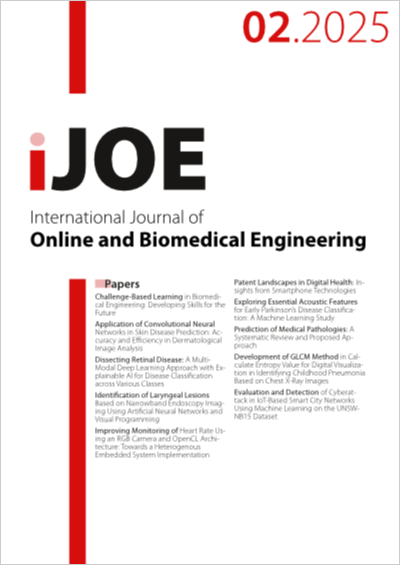Evaluation and Detection of Cyberattack in IoT-Based Smart City Networks Using Machine Learning on the UNSW-NB15 Dataset
DOI:
https://doi.org/10.3991/ijoe.v21i02.52671Keywords:
IoT, smart city, network intrusion detection, cyberattacks, Decision Tree Classifier, machine learning, deep learning, UNSW-NB15 dataset, DoS, Multi-Layer Perceptron, Worms, Backdoor, K-Nearest-Neighbor Classifier, Linear Regression, Linear Support Vector Machine, Random Forest, data preprocessing, feature selection, binary classification, Logistic Regression, multi-class classificationAbstract
With the proliferation of Internet of Things (IoT) devices across various applications, for example, smart homes, drones, and healthcare, the security vulnerabilities have also increased, necessitating robust network intrusion detection systems (NIDS). This study focuses on the classification of cyberattacks, including denial of service (DoS), worms, and backdoor attacks, from normal network traffic using the UNSW-NB15 dataset. machine learning (ML) and deep learning (DL) models, such as decision tree (DT) classifier, K-nearest-neighbor (KNN) classifier, linear regression, linear support vector machine, logistic regression (LR), multi-layer perceptron (MLP), and random forest (RF), were employed for both binary and multi-class classification. Data preprocessing involved handling null values, one-hot encoding categorical variables, and normalizing numerical features. Feature selection was performed using the Pearson correlation coefficient method, reducing the dataset attributes significantly. The models demonstrated high accuracy in detecting anomalies, with the RF classifier achieving the highest accuracy of 98.64% for binary classification and notable performance across multi-class classifications. This study underscores the effectiveness of ML techniques in enhancing IoT network security and offers comprehensive insights.
Downloads
Published
How to Cite
Issue
Section
License
Copyright (c) 2024 Seyed Hosseini, Shahbaz Pervez

This work is licensed under a Creative Commons Attribution 4.0 International License.



